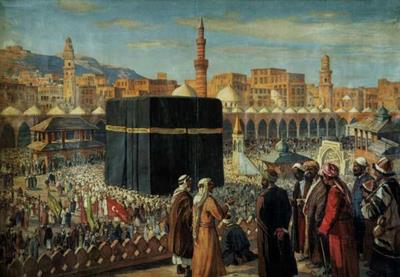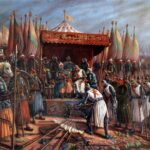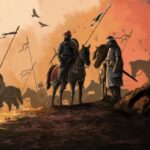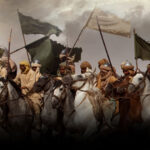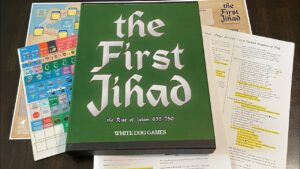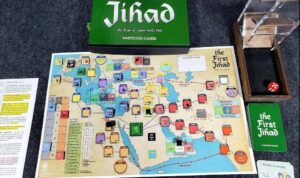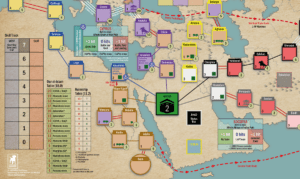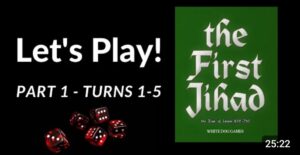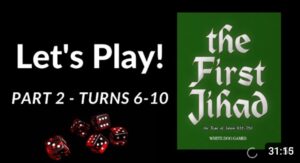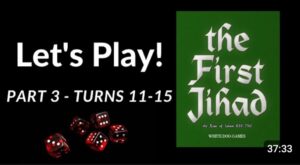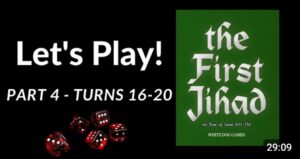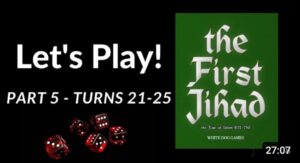Exploring History Through Gaming
The production of the game dates back to the 6 and 7 centuries when the prophet Mohammad passed away and it was the period in which there was lots of chaos in Muslims since there was a dichotomy in Mohammad’s succession. The prophetic era came to an end with his passing, and the rapidly expanding Muslim community required the establishment of a new leadership structure. In Islamic history, the years 632 to 750 AD are significant and profound. This period includes the founding of the early Islamic Caliphates as well as the rise of Islam. During this period there were lots of wars among Abbasid Caliphs such as: The Battles of Ertedad.
- Abbasid Caliphs
- Islamic Battles
- The Battles of Ertedad
Significant advances were made during this time, which is sometimes called the Islamic Golden Age, in a number of disciplines, including science, mathematics, philosophy, and the arts. During this period, the Islamic world emerged as a hub for knowledge and interactions between cultures. According to this, choosing this period of Islamic era is a clever choice due to the process of the game. If you need more information about the game’s religious background, you can click [here].
Game’s analysis
First of all, the game’s cover is green, which makes sense given that green is typically associated with Islam. Secondly, depending on the producer’s intentions, the fact that the game is a solitaire game may have some significance.
- Unitarian; Muslims believe that there is only one God.
- liberty; everyone is free to select their own route to God
- Jihad is an individual pursuit (also very important).
There are a number of factors to take into account on how the game appears on the map. For instance, since nearly all of the historical events that are recounted take place in Macca and Madinah, Mecca is located in the heart of the map and has several pathways leading from it. Stated differently. Put another way, it forms the basis of both the map and the game as a whole, which makes sense given that the game is about Islam. Similar to this, there are other games with similar visuals, such The Mission, which has a similar process but a Christian setting with Jerusalem appearing to be its center.
The game is clearly well-designed in accordance with the historical events that occurred, and it is undoubtedly set in the Middle East. The pathways also depict the relationships that the Arabs had at that time.
Another issue is that there are six paths starting from Mecca and five of which end in round area that the designer called it “end of the earth” . The only one path that does not end to that is the Greek path that starts from Damascus and Jerusalem and ends in Rome. This may relate to the Christianity and maybe relations between these two lands.
Game’s materials
- Game Board: The central playing surface where the game is set. It often features a layout or map that players interact with. In this game it appears to be a large map with some stuff on it.
- Game Pieces: Tokens, figures, or markers representing players or elements within the game. These could be shaped like characters, vehicles, or other thematic components which are some small tubes in this game.
- Cards: Decks of cards used for various purposes, such as drawing resources, determining actions, or introducing random events. Here we have about 50 cards which have some icons and symbols on them. Each card also has the information of an event during these years and represents the events of about 2-4 years which can be close to the designer’s aims and let the players know about its historical background behind it.
- Dice: Standard six-sided dice or specialized dice with different numbers of sides. Dice are often used to introduce an element of chance into the game. in this game there are 2 dice.
- Rulebook: The guide that outlines the rules of the game, including setup, gameplay mechanics, and winning conditions.
How to play the game
Discover the intricacies of playing “The First Jihad: The Rise of Islam” by exploring the rulebook provided [here]. This comprehensive guide functions as the game’s roadmap, unveiling the nuances of every move and strategic approach. Gear up for thrilling gaming experiences as you delve into the details. If you lean towards a more interactive learning style with a visual flair, immerse yourself in our YouTube instructional videos – tailored for those who enjoy a hands-on method to grasp the nuances of the game. Find the corresponding link below for an accessible pathway to mastery.
Let’s Play! The First Jihad – Part 1 Let’s Play! The First Jihad – Part 2 Let’s Play! The First Jihad – Part 3
After watching these videos, it is the time to have an experience in playing this amazing game. In order to play it online you just need to click [here] and find the game to play. Moreover, if you are willing to buy the physical game and play it with your family and friends in your free time to learn more about these historical events, you are more than welcome by using [this] website.
Conclusion
The board game “The First Jihad: The Rise of Islam” is highly praised for its engaging theme, rules, and visual design. Designers Ben Madison and Wes Erni, known for their work on games like Jeff Davis, Margaret Thatcher’s War, Nubia, Gorbachev, and more, effectively incorporated historical events into the game. This enables players to immerse themselves not only in the gameplay but also in the historical context that shapes the rules. The game stands out for its strategic depth and the skillful use of events to enhance player involvement.
